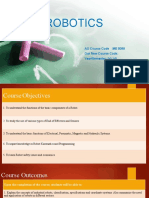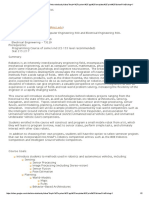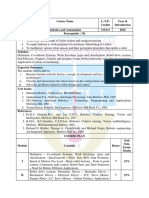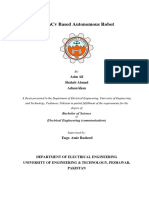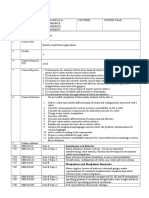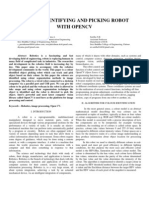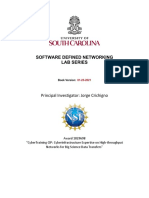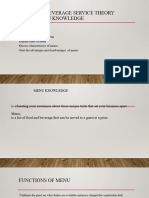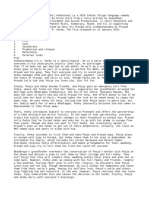ROBOT SENSING AND VISION LAB [0 0 3 1]
[ Revised Credit System ]
(Effective from the academic year 2025)
Subject Code CSE_ XXXX IA Marks
Number of Lecture Hours/Week Exam Marks
Total Number of Lecture Hours Exam Hours
CREDITS – 01
Course objectives: This course will enable students to
To understand the Methods of robot programming.
To demonstrate Robot control language.
To implement Robot sensing techniques
To implement Machine Vision algorithms.
Design and implementation of Robotic systems using Sensors and Vision. Lab Hours
Laboratory Experiments:
1. Methods of robot programming, Introduction to various languages such as
RAIL, VAL II.
2. Robot control language RCL: data types and variable declarations, arithmetic
expression statements, frame expression statements.
3. Demonstration of Robot vision:
Introduction to OpenCV, Open NI and PCL, installing and testing ROS camera
Drivers, ROS to OpenCV - The cv_bridge Package.
4. Implementation of Image segmentation algorithm.
5. Implementation of Boundary detection algorithm.
6. Implementation of Navigation and localization using sensors for object
detection and recognition,
7. Implementing vision algorithms for object detection and recognition, position
recognition
8. Implementing Vision algorithms for identifying end wires- binary vision
algorithm, grey scale vision algorithm.
8. Grasping and manipulation with sensors, Human-robot interaction and sensing
9. Image Sensing- Sensing Color, Randomness and noise and Quantization of the
Image.
10. Implementing vision algorithms for object detection and recognition, position
recognition.
11. Case Studies: Machine vision applications to industries: Condition
monitoring, metrology and gauging, OCR and OCV, Augmented reality,
�Surveillance.
12. Mini project where they apply their knowledge of sensors in industrial
robotics to solve a real-world problem or develop an innovative application.
Course outcomes:
After studying this course, students will be able:
1. To design various sensor based robotic applications.
2. To demonstrate the implementation of sensing techniques in robotics.
3. To demonstrate machine vision System to build robotic applications.
4. To demonstrate image processing techniques to build robotic applications.
5. To demonstrate visual algorithms for real time robotic applications
Text Books:
1. Roland Siegwart, Introduction to Autonomous Mobile Robotics, MIT Press
2. Robin Murphy, Introduction to AI Robotics, MIT Press
3. David Vernon, Machine vision –automated visual inspection and robot vision, Prentice
Hall, 1991
Reference Books:
1. Introduction to Robotics Mechanics and Control, 4e, John Craig.
2. Visual control of robots: High-Performance Visual Servoing, Peter I. Corke.
3. Image Processing, Analysis, and Machine Vision, by Milan Sonka, Vaclav Hlavac,
Roger Boyle.




























